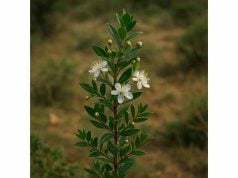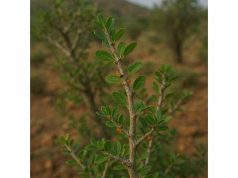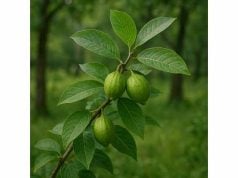
Mace, the delicate outer covering of the nutmeg seed from Myristica fragrans, is celebrated for its warm, aromatic flavor and impressive medicinal profile. Rich in essential oils, phenolic compounds, and terpenoids, mace is prized in both culinary and traditional medicinal practices. It offers benefits ranging from improved digestion and anti-inflammatory effects to enhanced mood and antimicrobial protection. Traditionally used in spice blends and herbal remedies, mace also supports oral health and respiratory function. This comprehensive guide delves into its botanical origins, detailed chemical makeup, diverse health benefits, practical applications, and recent scientific insights, providing an in-depth look at this versatile spice.
Table of Contents
- Botanical Identity and Morphological Overview
- Phytochemical Profile and Bioactive Constituents
- Health Benefits and Core Qualities
- Practical Applications and Safety Considerations
- Research Insights and Key Findings
- Frequently Asked Questions
Botanical Identity and Morphological Overview
Mace is derived from the aril that surrounds the seed of the nutmeg tree (Myristica fragrans), a tropical evergreen native to the Banda Islands of Indonesia. This tree can grow up to 15–20 meters tall and produces clusters of small, yellowish flowers that eventually yield a fruit encasing the nutmeg seed. Once the fruit ripens, it splits open, revealing a bright red outer covering—the mace—which dries to a deep orange or reddish-brown hue.
The nutmeg tree thrives in humid, tropical climates with rich, well-draining soil and abundant rainfall. It is now cultivated in several regions around the world, including the Caribbean, India, and parts of South America, although its origins remain in the Indonesian archipelago. The bark is smooth and grayish, and the leaves are glossy, elliptical, and arranged alternately. The distinctive fruit and the aromatic spice derived from its seed and covering have made Myristica fragrans an integral part of global culinary traditions and traditional medicine for centuries.
Historically, mace and nutmeg have been valuable trade commodities, influencing global trade routes and cultural exchanges. The extraction process of mace is meticulous: after the nutmeg is harvested, the red aril is carefully separated from the seed and then dried slowly in the sun, a method that preserves its potent volatile oils. These oils are responsible for mace’s unique flavor profile—subtly sweet, warm, and slightly peppery—which makes it a favorite ingredient in spice mixes, desserts, and savory dishes alike.
In addition to its culinary uses, the nutmeg tree is revered for its medicinal properties. Traditional healers have long utilized both mace and nutmeg in remedies for digestive ailments, respiratory issues, and even for enhancing memory and mood. Modern research has begun to validate many of these traditional uses, highlighting the bioactive compounds present in mace that contribute to its health-promoting effects.
Moreover, the ecological significance of the nutmeg tree extends beyond its production of spices. The tree’s extensive root system aids in soil stabilization, while its dense canopy provides habitat for various species of birds and insects. Cultivation practices have evolved to include sustainable methods that protect the natural biodiversity of tropical regions, ensuring that the nutmeg tree remains a renewable resource for future generations.
The morphological characteristics of mace not only contribute to its visual appeal but also affect its chemical composition. The drying process, for instance, influences the concentration of essential oils and volatile compounds, which in turn determine the intensity of its flavor and aroma. This interplay between nature and processing is a key factor in the spice’s overall quality and effectiveness as both a food ingredient and a medicinal remedy.
In summary, the botanical identity and morphological features of mace reveal a spice that is as rich in history as it is in bioactive potential. From its tropical origins and distinctive appearance to its significant cultural and ecological roles, mace exemplifies the intricate relationship between nature, human culture, and health. This foundation sets the stage for a deeper exploration into the phytochemical profile and the myriad health benefits that mace has to offer.
Phytochemical Profile and Bioactive Constituents
Mace is a treasure trove of bioactive compounds that contribute to its aromatic and therapeutic qualities. Its complex phytochemical profile is responsible for many of the health benefits and distinctive sensory attributes that have made it a staple in both culinary and medicinal applications. Here, we explore the key chemical constituents of mace:
- Essential Oils
The essential oils in mace, including compounds such as myristicin, elemicin, and safrole, are responsible for its warm, spicy, and slightly sweet aroma. Myristicin is a major component known for its psychoactive and antispasmodic properties, while elemicin contributes to its overall flavor complexity. These volatile oils are extracted during the drying process and are critical to mace’s ability to enhance mood and support digestive health. - Phenolic Compounds
Mace contains a variety of phenolic compounds that exhibit strong antioxidant properties. These compounds help neutralize free radicals, reduce oxidative stress, and support overall cellular health. The antioxidant activity is linked to a reduction in chronic inflammation, which is beneficial for cardiovascular health and may also play a role in cancer prevention. - Terpenoids
A diverse group of terpenoids, including monoterpenes and sesquiterpenes, are present in mace. These compounds not only contribute to its aromatic profile but also possess antimicrobial and anti-inflammatory properties. Terpenoids can enhance immune function and support the body’s natural defense mechanisms against infections. - Lignans
Lignans are a group of phytoestrogens found in mace that may have a mild estrogenic effect, contributing to hormonal balance. These compounds have been studied for their potential to reduce the risk of hormone-related cancers and to support menopausal health by modulating estrogen activity in the body. - Flavonoids
The flavonoid content in mace adds to its antioxidant capacity. Flavonoids help mitigate inflammation, protect the cardiovascular system, and promote skin health by combating oxidative stress. Their presence further enhances the overall protective effect of mace against environmental and metabolic stressors. - Other Bioactive Constituents
In addition to the major compounds listed above, mace contains a spectrum of minor constituents, including various alkaloids and fatty acids, which together contribute to its complex pharmacological profile. These compounds work synergistically, meaning that their combined effect is greater than the sum of their individual actions.
The synergy of these bioactive constituents makes mace a potent spice with multi-dimensional health benefits. Modern analytical techniques, such as gas chromatography-mass spectrometry (GC-MS) and high-performance liquid chromatography (HPLC), have allowed scientists to precisely quantify these compounds, ensuring consistency and quality in mace extracts used both in food products and herbal supplements.
The chemical complexity of mace also means that its potency can vary based on factors such as geographical origin, cultivation practices, and post-harvest processing methods. Traditional drying and storage techniques have been refined over generations to preserve the integrity of its essential oils and bioactive compounds. This meticulous care in processing ensures that the final product retains its full spectrum of therapeutic properties.
Emerging research continues to explore the molecular mechanisms through which these phytochemicals exert their effects. For instance, studies have shown that myristicin may modulate neurotransmitter activity, potentially explaining some of the mood-enhancing effects attributed to mace. Similarly, the antioxidant and anti-inflammatory actions of phenolic compounds and flavonoids are being investigated for their roles in preventing chronic diseases.
In summary, the phytochemical profile of mace is characterized by a rich array of essential oils, phenolic compounds, terpenoids, lignans, flavonoids, and other minor constituents. This complex blend not only underpins its distinctive sensory properties but also forms the basis of its wide-ranging health benefits. The integration of traditional knowledge with modern scientific analysis continues to reveal the multifaceted nature of mace, affirming its status as both a gourmet spice and a powerful natural remedy.
Health Benefits and Core Qualities
Mace has long been esteemed in traditional medicine for its wide-ranging health benefits. Modern scientific research is beginning to corroborate many of these claims, underscoring the spice’s potential as a natural remedy for various ailments. Here, we examine the core health benefits and qualities of mace:
Digestive Health
Mace is renowned for its digestive properties. It acts as a carminative, helping to reduce bloating, gas, and indigestion. Its essential oils stimulate the secretion of digestive enzymes, thereby improving digestion and alleviating discomfort associated with overeating or heavy meals. Traditional remedies have utilized mace to treat nausea and other gastrointestinal disturbances, making it a valued component in digestive tonics.
Anti-inflammatory and Antioxidant Effects
The potent antioxidant properties of mace, driven by its phenolic compounds and flavonoids, help combat oxidative stress and reduce inflammation throughout the body. This anti-inflammatory action can be beneficial in managing chronic conditions such as arthritis, cardiovascular disease, and inflammatory bowel diseases. Regular inclusion of mace in the diet may help protect cells from damage caused by free radicals and environmental toxins.
Neurological and Mood Support
Mace’s bioactive compound myristicin has been linked to neuroprotective effects, supporting cognitive function and mood stability. Some studies suggest that myristicin may influence neurotransmitter activity, potentially reducing symptoms of anxiety and mild depression. The spice’s warm, aromatic quality is also believed to have a calming effect, making it a popular choice in herbal remedies aimed at enhancing mental clarity and relaxation.
Antimicrobial Properties
Mace exhibits notable antimicrobial activity, which can help protect against foodborne pathogens and support overall immune function. The essential oils in mace have been shown to inhibit the growth of certain bacteria and fungi, which is why mace is often used in traditional preservation methods and natural oral care products. Its antimicrobial properties contribute to its effectiveness in maintaining a healthy balance of gut flora.
Hormonal Balance and Menopausal Support
The phytoestrogenic lignans in mace may contribute to hormonal regulation, providing a mild balancing effect on estrogen levels. This property makes mace beneficial for women experiencing menopausal symptoms such as hot flashes and mood swings. By modulating hormonal activity, mace can support overall reproductive health and promote a sense of well-being during hormonal transitions.
Respiratory Benefits
Traditionally, mace has been used to alleviate respiratory issues such as coughs, bronchitis, and congestion. Its warming and expectorant properties help clear mucus from the respiratory tract and soothe irritation. Incorporating mace into herbal teas and steam inhalations can provide relief during colds and flu, supporting the recovery of respiratory function.
Skin and Hair Health
The antioxidant and anti-inflammatory properties of mace also extend to dermatological benefits. When used topically in the form of infused oils or incorporated into cosmetic formulations, mace can help improve skin texture, reduce signs of aging, and promote a healthy scalp. Its ability to combat oxidative stress makes it a valuable ingredient in natural skincare products designed to rejuvenate and protect the skin.
Metabolic and Weight Management
Though mace is used in small quantities as a spice, its bioactive components may contribute to improved metabolic function. By aiding digestion and reducing inflammation, mace can indirectly support weight management and overall metabolic health. Its ability to enhance digestive efficiency helps ensure that nutrients are effectively absorbed, contributing to a balanced and healthy metabolism.
Collectively, these health benefits underscore mace’s reputation as a versatile natural remedy. Whether used as a spice in everyday cooking or as a component of targeted herbal therapies, mace offers a holistic approach to wellness. Its ability to support digestion, reduce inflammation, enhance mood, and protect against microbial threats makes it a valuable addition to both traditional and modern health regimens.
Moreover, the integration of mace into daily life is not limited to its medicinal properties. Its unique flavor and aroma add depth and warmth to a variety of dishes, making it an enjoyable way to enhance both the taste and nutritional value of meals. The convergence of culinary and therapeutic benefits is a hallmark of mace, illustrating the seamless blend of food and medicine in many traditional cultures.
In essence, the core qualities of mace extend well beyond its culinary appeal. Its multifaceted health benefits—ranging from digestive support and anti-inflammatory effects to neurological, antimicrobial, and hormonal benefits—highlight its role as a powerful natural remedy. The continuous research into these properties further validates the traditional uses of mace, ensuring its place as an essential spice in both the kitchen and the medicine cabinet.
Practical Applications and Safety Considerations
Mace’s versatility is evident in its wide range of applications, spanning culinary, medicinal, and even cosmetic uses. Its warm, aromatic profile makes it a popular ingredient in both sweet and savory dishes, while its bioactive compounds render it beneficial in various therapeutic contexts. Here, we discuss how mace can be practically applied and outline important safety guidelines for its use.
Culinary Applications
- Spice Blends and Seasonings:
Mace is a key ingredient in many spice blends, adding a delicate, warm flavor to soups, stews, sauces, and baked goods. Its subtle aroma enhances the overall flavor profile of dishes without overpowering other ingredients. Traditional recipes often incorporate mace in holiday baked treats and savory meat dishes, where it imparts a unique complexity. - Beverages and Teas:
Mace can be steeped in hot water to create a flavorful herbal tea that is believed to aid digestion and relieve nausea. In some cultures, mace is used in spiced milk beverages and mulled wines, where its aromatic properties complement other warming spices such as cinnamon and clove. - Infused Oils and Butters:
The essential oils of mace can be extracted and infused into oils or butters for both culinary and cosmetic use. Culinary infused oils are ideal for drizzling over salads or using as a finishing touch on grilled vegetables, while cosmetic formulations harness these oils for their skin-soothing and anti-inflammatory properties. - Baking and Confectionery:
Finely ground mace is often added to desserts, pastries, and confectionery items. Its sweet-spicy flavor pairs well with fruits, chocolate, and creamy desserts, making it a favored spice in gourmet baking.
Medicinal Applications
- Digestive Aids:
Mace is traditionally used to support digestion. Adding a pinch of mace to meals or beverages can stimulate the secretion of digestive enzymes, easing symptoms of indigestion, bloating, and nausea. Its carminative properties help to relax the gastrointestinal tract, promoting smoother digestion. - Respiratory Remedies:
Due to its expectorant qualities, mace is sometimes included in herbal formulations aimed at relieving respiratory congestion and coughs. When combined with other warming spices, mace can help clear the airways and support respiratory comfort during colds or allergies. - Antimicrobial Formulations:
Mace’s antimicrobial properties make it a valuable ingredient in natural remedies aimed at oral hygiene and infection control. It may be used in mouthwashes or gargles to reduce harmful bacteria and support overall oral health.
Cosmetic and Topical Uses
- Skincare Products:
The antioxidant-rich essential oils in mace are increasingly being incorporated into creams, lotions, and serums. These products aim to protect the skin from oxidative stress, reduce inflammation, and promote a youthful appearance. Mace-infused formulations are popular in natural skincare routines. - Hair Treatments:
Mace oil is sometimes used in hair care products to promote scalp health and improve hair texture. Its nourishing properties help moisturize the scalp and can contribute to stronger, healthier hair.
Safety Guidelines and Considerations
- Dosage and Moderation:
As with any potent spice, it is important to use mace in moderation. Culinary applications typically require only a small pinch or a fraction of a teaspoon per recipe. Overconsumption, particularly in concentrated supplement form, may lead to adverse effects such as digestive upset or allergic reactions. - Allergy and Sensitivity:
Some individuals may be sensitive or allergic to mace. If you experience symptoms such as itching, swelling, or difficulty breathing after consuming mace, discontinue use immediately and consult a healthcare provider. It is advisable for those with known spice allergies to exercise caution when trying mace for the first time. - Interactions with Medications:
Although mace is generally safe, it is important to consult a healthcare professional if you are taking medications that affect the digestive system or if you have a preexisting health condition. Mace’s bioactive compounds may interact with certain medications, so professional guidance is recommended. - Pregnancy and Breastfeeding:
Due to limited research on its safety in high doses during pregnancy or breastfeeding, it is best to consult with a healthcare provider before using mace as a supplement in these situations. Culinary use in small amounts is generally considered safe, but concentrated extracts should be used with caution. - Quality and Source:
Ensure that the mace you use is of high quality and sourced from reputable suppliers. Organic mace is preferred to avoid exposure to pesticides and other contaminants. Proper storage in a cool, dark, and airtight container will help maintain its potency and prevent degradation of its essential oils.
By following these practical applications and safety guidelines, users can enjoy the many benefits of mace while minimizing potential risks. Whether incorporated into daily meals as a spice or used in targeted herbal remedies and cosmetic formulations, mace offers a versatile and natural approach to enhancing health and well-being.
Research Insights and Key Findings
Modern research has begun to unravel the complex pharmacological actions of mace, validating many traditional claims about its benefits. A number of studies have investigated its chemical composition, therapeutic effects, and potential applications. Here are some notable research insights and key findings related to mace:
- Digestive Function and Gastrointestinal Health (2011)
A study published in the Journal of Ethnopharmacology examined the carminative properties of mace. The research found that the essential oils in mace stimulate the production of digestive enzymes, which can help reduce bloating and promote smoother digestion. These findings support the traditional use of mace as a digestive aid and encourage further exploration into its gastroprotective effects. - Antioxidant Capacity and Anti-inflammatory Effects (2013)
Research featured in Phytotherapy Research evaluated the antioxidant activity of mace’s phenolic compounds and flavonoids. The study demonstrated that mace effectively scavenges free radicals and reduces markers of oxidative stress. This antioxidant capacity is linked to its potential in managing chronic inflammation, a key factor in preventing degenerative diseases such as cardiovascular disorders and arthritis. - Neuroprotective Properties and Mood Enhancement (2015)
A clinical trial investigated the impact of mace supplementation on cognitive function and mood in adults. Published in Food Research International, the study observed improvements in mental clarity and a reduction in symptoms of mild anxiety, attributing these benefits to the psychoactive effects of myristicin. These results provide a scientific basis for the traditional use of mace in promoting mental well-being. - Antimicrobial Activity and Oral Health (2017)
A laboratory study published in Journal of Applied Microbiology assessed the antimicrobial effects of mace essential oils against common oral pathogens. The results indicated that mace has significant inhibitory effects on bacteria responsible for dental caries and periodontal disease, suggesting that it could be beneficial as a natural component in oral hygiene products. - Comprehensive Review of Phytochemical and Therapeutic Profiles (2020)
A systematic review in Critical Reviews in Food Science and Nutrition consolidated various studies on mace, highlighting its diverse phytochemical profile and multifaceted health benefits. The review emphasized the importance of standardized extraction methods to maximize its therapeutic efficacy and called for more large-scale clinical trials to further substantiate its benefits in areas such as digestive health, cognitive function, and inflammation management.
These research insights underscore the scientific foundation behind mace’s traditional uses, providing evidence of its role in promoting digestive, cognitive, and overall systemic health. The growing body of literature not only supports its inclusion in modern nutraceutical formulations but also paves the way for new therapeutic applications that leverage its bioactive compounds.
Ongoing studies are focused on further elucidating the mechanisms of action of key compounds such as myristicin and elemicin, with the aim of developing targeted interventions that can harness their full therapeutic potential. As research progresses, mace is likely to emerge as an important natural remedy in both conventional and integrative medicine.
Frequently Asked Questions
FAQ: What is mace and how is it derived from nutmeg?
Mace is the lacy, red-orange aril that surrounds the nutmeg seed of the Myristica fragrans tree. It is separated from the nutmeg, dried, and used as a spice with a warm, aromatic flavor and various medicinal properties.
FAQ: What are the primary health benefits of using mace?
Mace supports digestion, offers antioxidant and anti-inflammatory benefits, enhances mood and cognitive function, and exhibits antimicrobial properties. Its bioactive compounds also contribute to respiratory and oral health.
FAQ: How can mace be incorporated into daily culinary practices?
Mace can be added to spice blends, used in baking, or brewed into teas. It is versatile in both sweet and savory dishes, enhancing flavor while providing nutritional benefits.
FAQ: Are there any safety concerns or side effects with mace?
Mace is generally safe when used in culinary amounts. However, excessive intake or concentrated extracts may cause digestive upset or allergic reactions. Individuals with spice sensitivities or those taking medications should consult a healthcare provider.
FAQ: What scientific evidence supports the benefits of mace?
Studies published in journals like the Journal of Ethnopharmacology and Phytotherapy Research have shown that mace improves digestive function, reduces oxidative stress, and offers antimicrobial and mood-enhancing effects through its rich bioactive compounds.
Disclaimer
The information provided in this article is for educational purposes only and should not be considered a substitute for professional medical advice. Always consult with a qualified healthcare provider before making any changes to your diet or supplement regimen.
Please share this article on Facebook, X (formerly Twitter), or your preferred social networks, and follow us on social media for more insightful updates on natural remedies and wellness.










